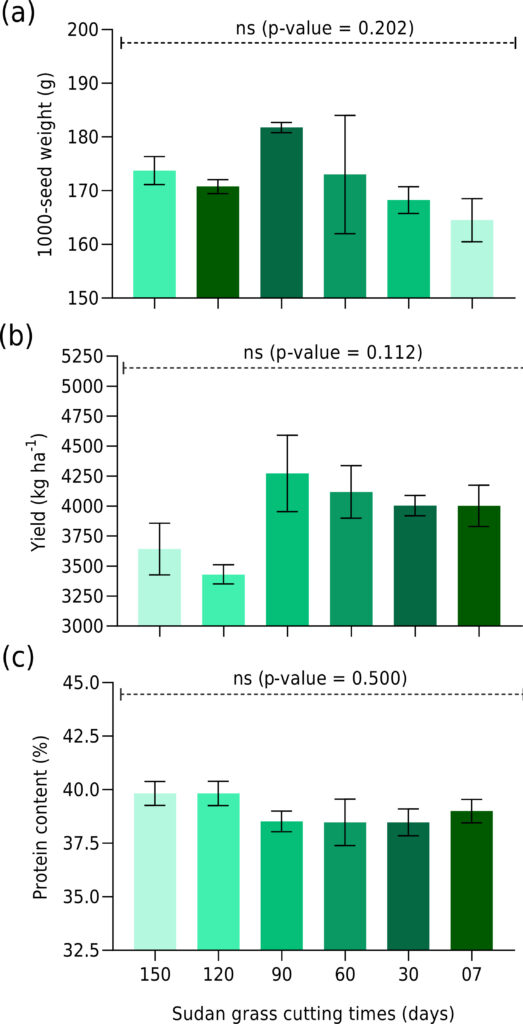Rev. Bras. Ciênc. Solo.2025;49:e0240227.
Early termination of Sudan grass (Sorghum sudanense) used as soil cover in a soybean cropping system in the Brazilian Cerrado
06/nov/2025
DOI: 10.36783/18069657rbcs20240227
ABSTRACT
Sudan grass (Sorghum sudanense (Piper) Stapf.) shows potential as a cover crop under the no-tillage system in soybean growing under the conditions of the Brazilian Cerrado region, due to high biomass production under water deficit. The large amount of biomass produced can improve soil microbiological activity, but may also negatively affect subsequent soybean yield due to nutrient competition, particularly if termination of the cover crop is delayed. To improves the use of Sudan grass as a cover crop, this study aimed to evaluate the most suitable time for terminating Sudan grass to balance the maintenance of soil biological quality and increased soybean yield. Experiment was conducted in a randomized block design, with four replications, evaluating six cutting times for Sudan grass: 150, 120, 90, 60, 30, and 7 days before soybean sowing (DBSS). Early cutting of Sudan grass did not negatively affect soil biological properties; cutting at 150 DBSS led to a significant (p≤0.05) increase in microbial biomass carbon (111 mg kg-1) and the microbial quotient (41 mg kg-1). In addition, early cutting at 150 DBSS increased the concentration of S-SO42- in the soil (13 mg dm-3). Early cutting at 150, 98, and 67 DBSS led to increases in soybean foliar concentrations of Cu (12 mg kg-1), P (4.11 g kg-1), and K (24 g kg-1), respectively. However, these increases in soybean foliar concentrations did not result in higher grain yield, 1000-seed weight, or grain protein content. Therefore, Sudan grass can be incorporated as a cover crop in a no-tillage system in the soybean off-season in the northeastern Cerrado region of Brazil. It is possible to cut the Sudan grass up to 7 days before sowing soybean without harmful effects on soybean yield. However, early cutting of Sudan grass is recommended to increase the efficiency of carbon incorporation into the microbial biomass.
4

